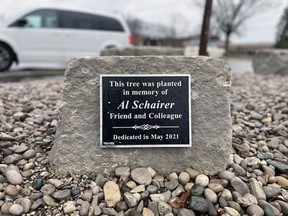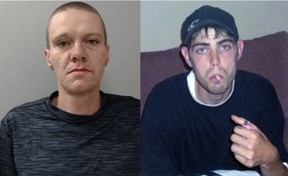The Crown called its final evidence Monday in the joint prosecution of two Sarnia men accused of murder in the fatal stabbing of a senior in his Devine Street home.

The Crown called its final evidence Monday in the joint prosecution of two Sarnia men accused of murder in the fatal stabbing of a senior in his Devine Street home.
Advertisement 2
Article content
Patrick Mark Lancaster, an OPP blood stain pattern analyst, and Alex Ross, a Sarnia police forensic identification officer, were the last of about 14 witnesses called to testify over the past month.
Article content
“With that, your honor, I can advise that is the evidence the Crown intends to lean on in this case,” prosecutor David Rows told Superior Court Justice Michael McArthur, who is overseeing the jury trial.
The defense lawyers will start calling any evidence they want starting Tuesday morning.
“You’re free to go until then,” McArthur later told panel of 14 jurors.
Noah Brown, 31, and Joshua Tomlinson, 38, have both pleaded not guilty to second-degree murder and breaking and entering the death of Allen Schairer, a 62-year-old retiree and photographer who lived alone on Devine Street near Tecumseh Park . He was discovered stabbed to death on Jan. 26, 2021, after police found his car abandoned on city outskirts, the trial has heard.
Advertisement 3
Article content
Lancaster, who started testing late last week, continued giving evidence Monday about the various types of blood spatter found throughout Schairer’s home, mainly in the bathroom and on a storage tote on his bed. Lawyers on both sides floated hypothetical scenarios past Lancaster, an expert witness.
He confirmed to the Crown that, if Tomlinson was bleeding from a cut and touched the tote, it could be the cause of the swipe stain they found on it. A cut on Tomlinson’s left hand has been a frequent topic of testimony throughout the trial.
But Lancaster didn’t have any information about a suspect being cut or injured while he was investigating the scene at the time and he didn’t notice any evidence of blood dripping throughout the house, he said.
Advertisement 4
Article content
Rows also suggested hypotheticals about a lack of blood in some areas via a suspect washing blood off their hands in Schairer’s stainless steel kitchen sink and a glove soaking it up. Lancaster later confirmed a blood-soaked glove could leave the type of transfer pattern found on the tote.
“Anything wet with blood could have caused that,” he said.

Tomlinson’s lawyer, Terry Brandon, ran a theory she’s previously raised past Lancaster, that her client’s DNA could’ve been transferred onto Brown at some point and that’s how Tomlinson’s DNA ended up on the tote.
Brown’s lawyer, Michael Moon, ran a detailed hypothetical scenario past Lancaster. Schairer was in his bathroom doing his nightly pre-bed routine when he was surprised by an intruder and stabbed on the left side of the back before recoiling toward the bathtub and being stabbed several more times. Tomlinson is cut on the hand before leaving the house with the knife, he added.
Advertisement 5
Article content
Moon asked Lancaster if that hypothetical could describe the type of blood spatter and pooling he observed in the bathroom.
“Correct, that could explain that,” he said.
Lancaster later confirmed he didn’t notice any signs of a clean up after the incident, such as diluted stains around sinks and knobs or mops with a dark brownish color in the bucket.
“I didn’t see anything overt like that in this case,” he said.

Ross testified Monday about executing a DNA warrant on Brown and Tomlinson while they were in custody at the Sarnia Jail a couple of months after Schairer died. He pricked their fingers and sealed their blood in packages from the Center of Forensic Sciences.
One additional piece of evidence, admitted by all parties, was introduced to the jury before they left; that Tomlinson went to a Sarnia Money Mart on Jan. 27, 2021, and cashed his Ontario Disability Support Program check shortly after noon for $1,062.
The trial continued Monday afternoon, but what was said was covered by a publication ban as the jury wasn’t present. That ban will be lifted once they start deliberating at the end of the trial.
Article content
